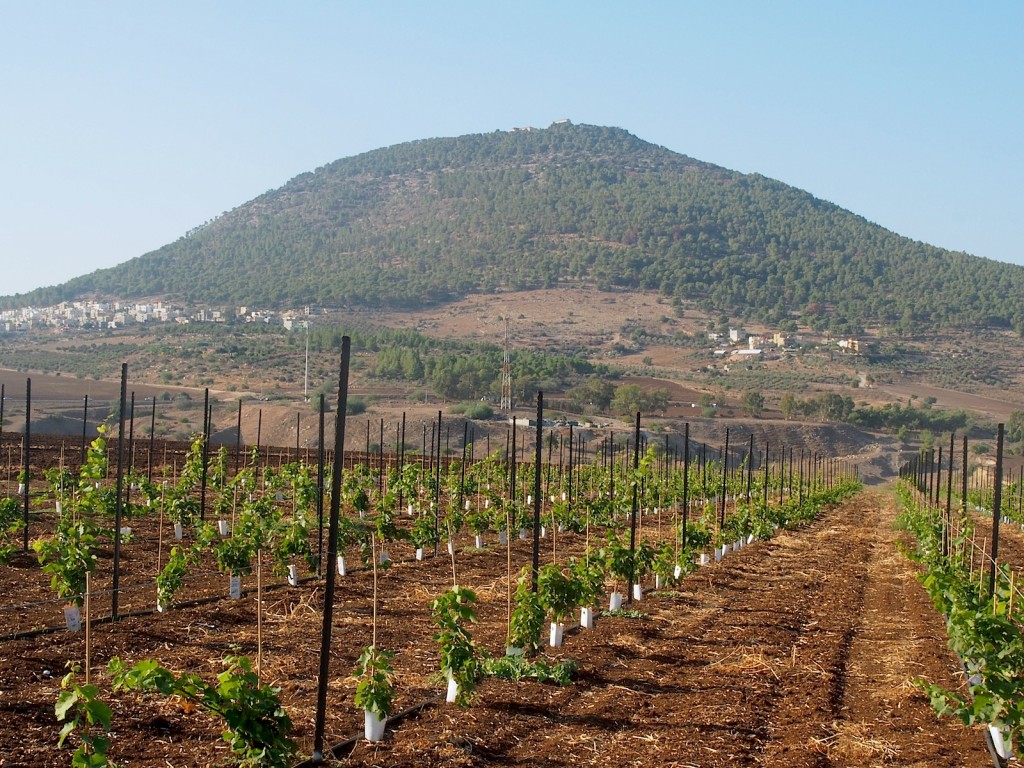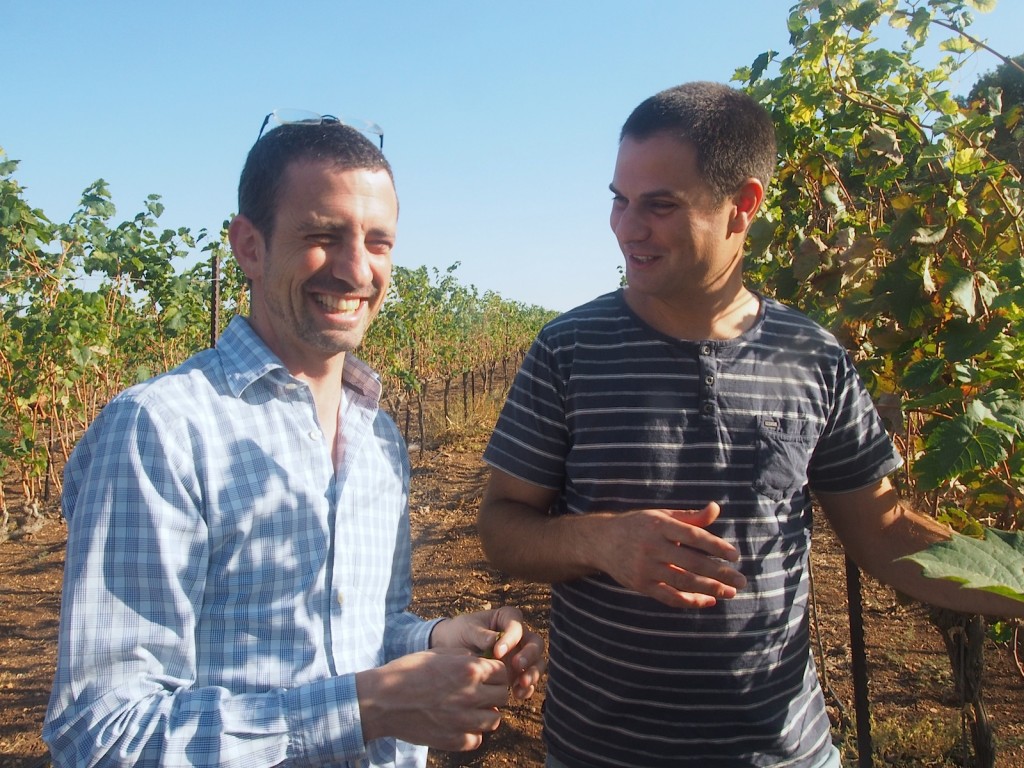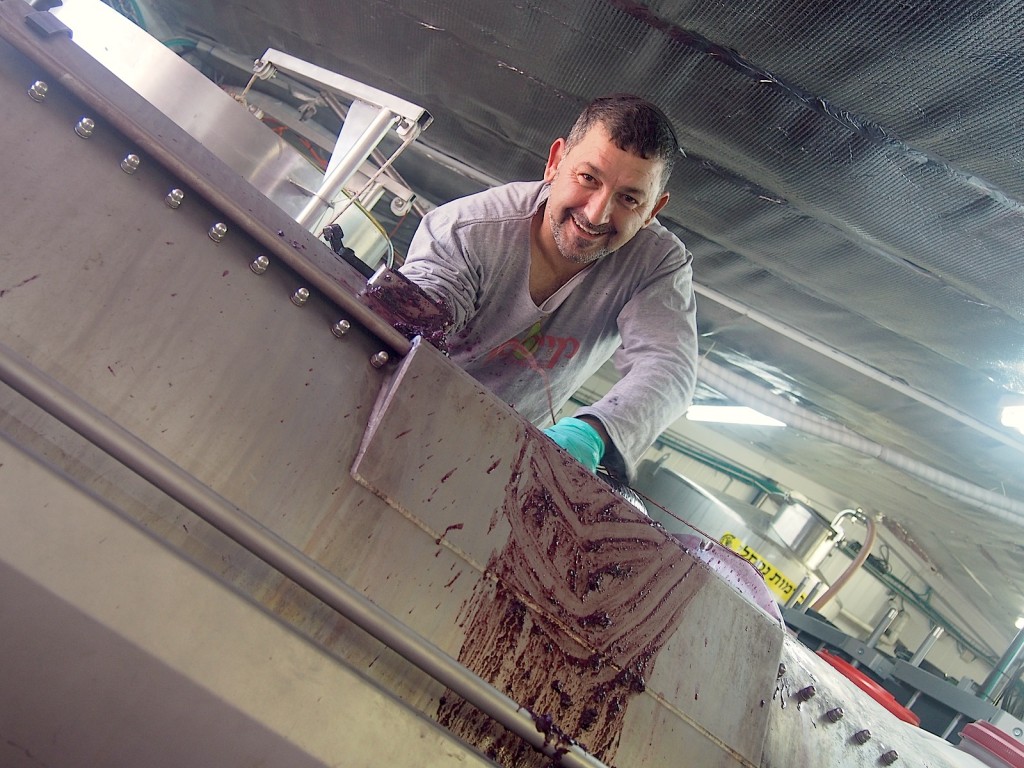Yesterday I took the not so narrow road to the Far North of Israel, that is to the hill country of Upper Galilee very close to the border with Lebanon, but before I got there I stopped at Yair Teboulle’s Domaine Netofa in Lower Galilee. His vineyards, pictured above, are situated close to Mount Tavor (in the background of the picture) and they are planted with what he calls “hot climate” grape varieties, which mostly means our friends GSM (Grenache, Syrah and Mourvèdre), GM originating in the Spanish Mediterranean and S coming from the French Mediterranean. The reason for this strategy is the fact that Lower Galilee is significantly warmer than Upper Galilee where most of the best Israeli Cabernet Sauvignons grow.
The rich, yet delicately spicy and velvety Domaine Natofa reds from the 2012 vintage suggest this was a very smart move by Yair (on the left in the picture below) and that vineyard manager Shahar Marmor (on the right) is already expertly cultivating these varieties for high quality in the 12 hectares of vineyards. Certainly, the vineyards looked impeccable and everything Shahar told me fitted what I saw. Considering the youth of the vines (the first were planted in 2006), and that he hasn’t been there since the beginning, this is a major achievement. Why am I going on about vineyard cultivation at such length? Well, wherever you are on Planet Wine there’s no possibility of making great wines without great grapes and to get them you need near-perfect vineyard cultivation, which is usually a great deal of work. More about these wines after my big article about Israeli wines appears in the Frankfurter Allgemeine Zeitung in a couple of weeks.
This morning I made my way onward and “upward” (i.e. northwards) to Ramot Naftaly winery in the village of the same name. Their red wines are quite powerful, like most Israeli reds, but you can taste the cool mountain air in them too. They have made quite a name for themselves here in Israel with their Barbera and to a lesser degree with their Malbec and Petit Verdot. The Barbera has a natural acidity that I wouldn’t instinctively associate with this warm climate, the Malbec was moderate in alcohol for this variety (which so easily climbs over 15%) yet tasted properly ripe, and the Petit Verdot managed to combine great concentration of black fruits with an uplifting freshness. They’re model examples of modern Upper Galilee reds without any trace of exaggeration (e.g. too much ripeness, alcohol, tannin, oak). The picture below shows the pressing of one of their 2014 red wines, and this does seem to be at least a very good vintage.
In my glass as I write this is the 2012 ‘Shoresh’ red wine cuvée from Tzora in the Judean Hills, and if after reading all of the above you doubt that Israeli red wines can taste dry and subtle, then you need to experience this masterpiece from winemaker Eran Pick. This is no showstopper, much less a blockbuster, but during the last decade Israeli winemakers were often too obsessed with making wines like that to attract attention, gain recognition and to sell their wines for prices that turned a profit. The best winemakers here have now dumped those goals in the trashcan and are seeking a distinctively Israeli kind of beauty like that of the ‘Shoresh’, rather than working a standardized, off-the-peg style that could just as easily have been achieved in a dozen other places around Planet Wine. Now we are starting to taste Israel!




![120114_riesling_global_RZ [1600x1200]](http://www.stuartpigott.de/wp-content/uploads/2014/10/120114_riesling_global_RZ-1600x120010.jpg)
“More about these wines after my big article about Israeli wines appears in the Frankfurter Allgemeine Zeitung in a couple of weeks.”
When? December?
Sadly, publication has just been put back until December 7th. However, that gives me time to taste even more Israeli wines before I write that article.
Best,
Stuart